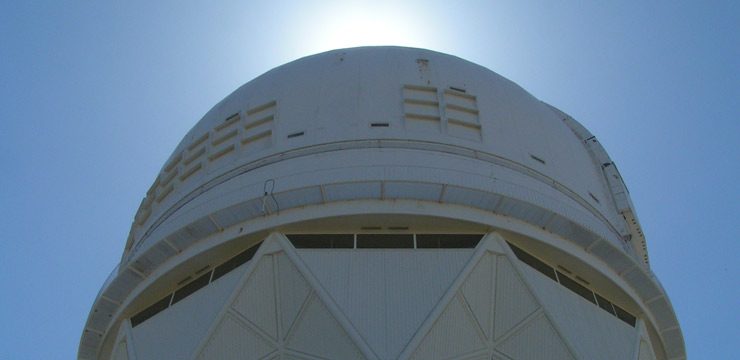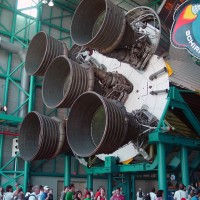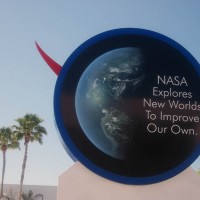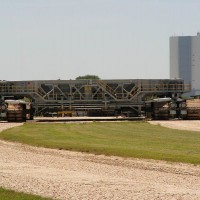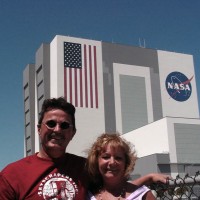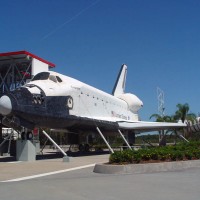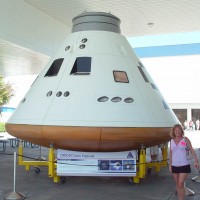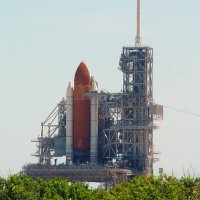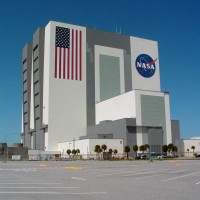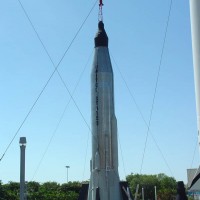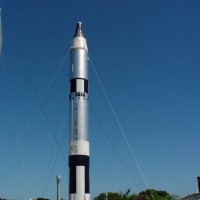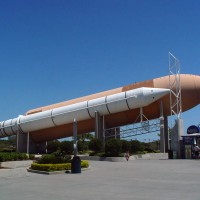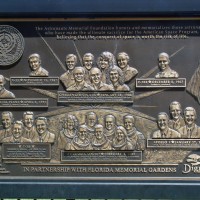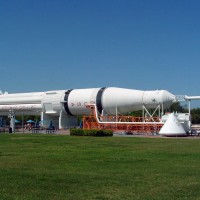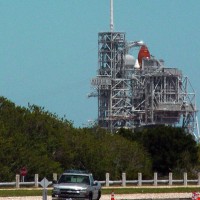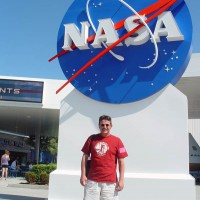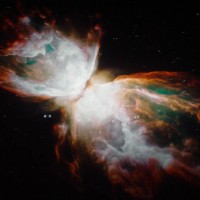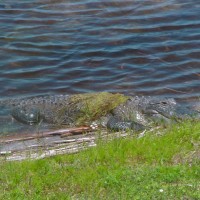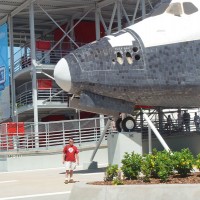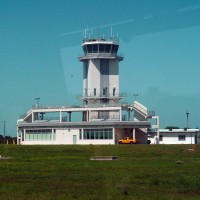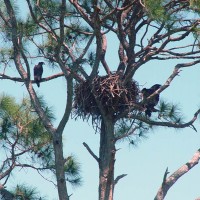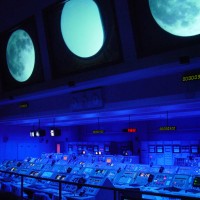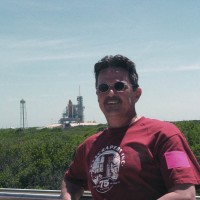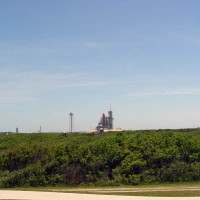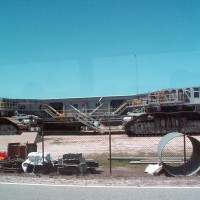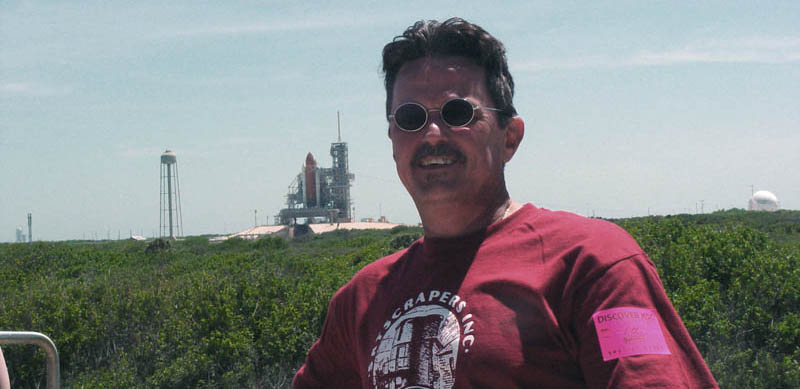
Kennedy Space Center: The Gateway to the Stars
May 2011 :
It was many years ago when I was the young age of 11. My father was in the Air Force and he was stationed in Orlando, Florida. We were living in the suburbs to the northeast of the city, and I have many fond memories of my two years there. I spent my time as all kids my age do, playing with friends, and exploring my surroundings. The weather there was always warm and I recall on many occasions accompanying my father on days of fishing. We would spend the entire day at locations like the St. John River and George’s Lake. These fishing excursions also included the Indian and Banana River which is on the east coast just below Cape Canaveral. This was a great time in my life and like most of us I look fondly back on those days, when life was simpler and our thoughts were filled with wonder.
One topic that occupied my thoughts from time to time was space travel. I was lucky enough to be in Florida during the Apollo era and can vividly recall witnessing launches from my backyard amongst the orange trees. While Cape Canaveral was a good distance to the east of us, the structure of the rocket could be made out as it rose above the tree line and houses. Its profile was a bright white color with flames trailing below it of equal or greater length. As the rocket picked up pace speeding to the heavens, trailed behind it was a long tail of expanding white smoke. As I strained my neck back to its farthest point, a bright flash appeared and the first stage could be seen separating. As the rocket continued to speed skyward, one could see the first stage fall and tumble away.
This experience was a beautiful sight I will never forget. We were preparing for the mission that would someday place a man on the moon and I was lucky enough to be witnessing it firsthand. Unfortunately, my father was transferred prior to the launch of Apollo 11 and I was unable to witness that historic launch.
My father’s next assignment brought us to the Azores, Portugal, a group of islands in the Atlantic Ocean. These islands are the tops of mountains of the mid-Atlantic Ridge that have broken through the surface of the ocean. It was there I can recall, as many of you, watching those grainy black and white television pictures of Neil Armstrong stepping off the ladder of the Lunar Lander and onto the surface of the moon. I never looked at the moon the same again. I recall sitting on the concrete wall of the front porch and watching the moon rise up from behind a large hill behind houses on the other side of the cobblestone road. My thoughts were of the Apollo crew and what it would be like to be there looking back at earth. What would it be like to be standing on the surface of the moon, surveying the landscape in front of you? This was an exciting time—the impossible had been achieved and all thoughts were of what the future would bring.
The Apollo missions continued and my family moved from one home to another. Our space programs continued with the conclusion of Apollo missions and the creation of the Space Shuttle. Now here is a real spaceship, one that can be flown back to earth and re-used time and time again. What a marvel it is to be able to witness its return to earth, unlike the Apollo capsules which floated back to earth below three air filled parachutes far out in the Pacific Ocean. The shuttle’s graceful return can be witnessed by anyone willing to travel to either Florida or California, dependant upon the weather. Well, this era is coming to an end as did the Apollo, Gemini, and Mercury missions prior.
It’s been 45 years from those days of my youth as I watched in awe as the Apollos rose from Cape Canaveral. I was determined to witness firsthand the end of the Space Shuttle Program. The following is an account of the trip my wife Lisa and I made to witness the launch of STS-134. Our itinerary included a visit to my parents in Largo, next to Tampa, for a few days, followed by four days in Cocoa Beach. I purchased our tickets to Kennedy Space Center as well as a bus tour to view STS-134 on launch pad 39A, one of the gateways to the stars.
Well, a week or two prior to our departure we received the bad news; the shuttle launch had been delayed for 10 days, so we would miss witnessing the launch. We decided not to delay our vacation. The following story chronicles our visit to Kennedy Space Center (KSC).
We arrived at KSC Sunday at 10:00am on April, 17th and were greeted to cloudless skies and temperatures in the mid 80’s. Our bus tour was scheduled for 1:00pm, so the plan was to take in some of the sights at the Visitor Center first. Upon exiting the entrance building you are greeted by the NASA logo located in the center courtyard of the visitor center facility. Directly behind it is a full scale model of the Orion Capsule which is slated to replace the shuttle. The Orion in the future will be ferrying up to six passengers to the Space Station and possibly beyond.
A short walk to your left brings you to the outdoor Rocket Garden, which features the space ships of our past. There one can walk around completely assembled Mercury and Gemini rockets standing upright in launch position, while the Saturn rocket lies on its side due to its height. Alongside each was a replica of their capsules allowing visitors to enter and experience the cramped quarters our astronauts had to contend with during those early ascents into space. On display next to the Saturn, in addition to the replica of the Apollo capsule, was an actual capsule along with a portion of the entry gantry. Visitors walk across the gantry to the capsule and view the interior through the plexi-glass covered entry door. Alongside the Saturn was also one of the massive rocket engines that roared to life many years ago. More on this later.
The right side of the facility featured the Space Shuttle, which included full size replicas of the shuttle, main fuel tank, and booster rockets. (The area also includes the Shuttle Experience building which we did not enter during our visit.) We did take the opportunity to enter the shuttle replica. Visitors can enter at two levels. The lower level featured the cargo bay and lower level crew seating. The cargo bay has a satellite payload towards the back for added effect. The top level featured the pilot and crew seating along with flight controls. The cargo bay can also be seen from this vantage point and provided a great view of the articulating mechanical arm. The size of the cargo bay is impressive and allows one to imagine the size of the Hubble Telescope which was carried into space by the shuttle.
Moving to the rear of the facility is a large wall of black granite panels inscribed with the names of those who have paid the ultimate sacrifice in America’s pursuit of space exploration. This area also displayed a bronze plaque dedicated to these brave individuals. This entire area is actually the front of the visitor center and is positioned so that all those arriving pass it when driving to the entrance of the Kennedy Space Center.
Well, 12:45pm quickly arrived and it was time to queue up for our bus tour. The tour was the “Then and Now Tour” which included visits to the historical Saturn era and all current major facilities associated with the missions of the Space Shuttle. Our first stop was at the viewing bleachers utilized by those lucky enough to acquire one of the limited numbers of close viewing tickets. This location is 3-1/2 miles from the launch pad. We then proceeded past the Vehicle Assembly Building and on to the housing facilities for the current mission astronauts. This is the building that is seen when video shows the crews prior to boarding the van to the space craft. The adjacent buildings in this area include the washing and drying machines for the booster rocket parachutes.
During our tour from facility to facility we encountered a number of the local wildlife, which included Manatees, Bald Eagles, Vultures, Wild Pigs, and of course Jim Hendrickson’s favorite - Gators. The Wild Pig was dead and lying on the side of the road and looked to weigh 150-200 pounds. He also appeared to be the guest of honor at the Pork-Quetta that 20-30 Vultures were attending. The Bald Eagles were a pair of juveniles roosting in a tree next to their nest. One sat quietly while the other flapped its wings, perfecting its flying skills. The Manatees were swimming in the saltwater waterways and the Gators were sunning themselves on the banks of the water culverts. Our tour guide informed us that just prior to a launch pyrotechnics are set off to persuade the wildlife to either flee or hide in order to avoid the concussion produced by the launch.
We continued on past the viewing gantry, rocket booster barge, and launch platform crawler on our way to the closest vantage point for viewing the shuttle poised at Pad 39A. We were then within less than a mile of the pad, and were informed that at this location the concussion at launch would stop your heart. This is where I snapped some of my best pictures of the Space Shuttle. This location provided great views of the underside of the main fuel tank and booster rockets. Large white spherical tanks could be seen at a distance to each side of the shuttle. These stored the liquid hydrogen fuel for the shuttle. The fueling of the shuttle does not occur until 24 hours prior to launch. During the tour we did pass the pad that would allow a view of the actual shuttle craft, but due to the roll away gantry could not be seen. We were informed that the gantry is positioned to protect the shuttle from birds and weather, and is only moved 24 hours prior to launch as well. The final areas we visited included the platform crawler pathway, the Vehicle Assembly Building, and the shuttle landing runway and control tower. We were informed that during final approach the shuttle flies from Australia to Florida in 1 hour. Final approach pitch is three times that of a commercial airliner and twice the speed.
Our tour ended with a visit to the Saturn/Apollo visitor center. This is where the roar of the Saturn rocket I noted earlier comes into play. Visitors are treated to a video on three large screens of clips of television shows, sporting events, and news events that were occurring during December, 1968. We were then lead into the actual Launch Control Room, where we were treated to a recreation of the historic Apollo 8 launch on the 21st at 7:50 am EST. The countdown started at five minutes and just prior to zero the roar of the engines began. When zero arrived the roar became deafening, the windows were rattling and the benches we were sitting on began shaking. This all subsided as the rocket gained altitude and made its way into space. The following web link, http://www.youtube.com/watch?v=XKtH0uzg8wU provides the view of this historic launch. The show ended and we exited into the main room of the building that houses the Saturn rocket with all five engines attached. A number of educating displays peppered the floor surrounding the rocket. Very nice.
We returned to the Main Visitor Center and concluded our day there with a movie at the IMAX Theater. My wife and I chose to see the Hubble 3D movie. This was a great film that showed Hubble’s launch, deployment and subsequent service missions, as well as a tour of the universe as seen by Hubble’s cameras. The three-dimensional views were amazing and I was blown away. If you have the opportunity, definitely see this film at an IMAX in 3D. I recommend it to everyone.
We ended the day at 5:30pm, a full 7 ½ hours after we had started. But we only scraped the surface of what could be seen. It was quite a memorable experience and I highly recommend a visit to the Kennedy Space Center to all that have the opportunity to spend some time at the Cape Canaveral area.
Related Topics
